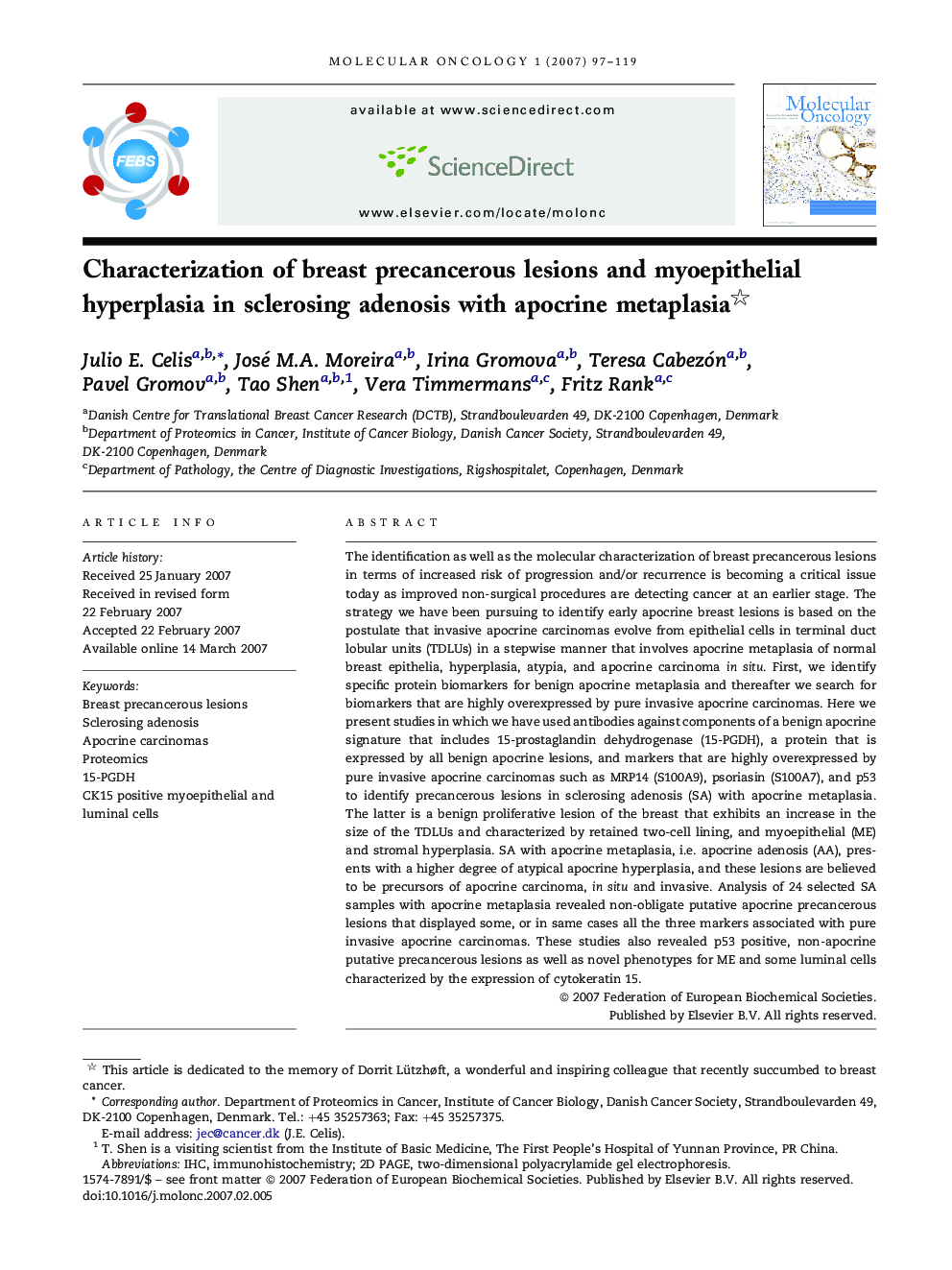| کد مقاله | کد نشریه | سال انتشار | مقاله انگلیسی | نسخه تمام متن |
|---|---|---|---|---|
| 2146040 | 1088846 | 2007 | 23 صفحه PDF | دانلود رایگان |

The identification as well as the molecular characterization of breast precancerous lesions in terms of increased risk of progression and/or recurrence is becoming a critical issue today as improved non-surgical procedures are detecting cancer at an earlier stage. The strategy we have been pursuing to identify early apocrine breast lesions is based on the postulate that invasive apocrine carcinomas evolve from epithelial cells in terminal duct lobular units (TDLUs) in a stepwise manner that involves apocrine metaplasia of normal breast epithelia, hyperplasia, atypia, and apocrine carcinoma in situ. First, we identify specific protein biomarkers for benign apocrine metaplasia and thereafter we search for biomarkers that are highly overexpressed by pure invasive apocrine carcinomas. Here we present studies in which we have used antibodies against components of a benign apocrine signature that includes 15-prostaglandin dehydrogenase (15-PGDH), a protein that is expressed by all benign apocrine lesions, and markers that are highly overexpressed by pure invasive apocrine carcinomas such as MRP14 (S100A9), psoriasin (S100A7), and p53 to identify precancerous lesions in sclerosing adenosis (SA) with apocrine metaplasia. The latter is a benign proliferative lesion of the breast that exhibits an increase in the size of the TDLUs and characterized by retained two-cell lining, and myoepithelial (ME) and stromal hyperplasia. SA with apocrine metaplasia, i.e. apocrine adenosis (AA), presents with a higher degree of atypical apocrine hyperplasia, and these lesions are believed to be precursors of apocrine carcinoma, in situ and invasive. Analysis of 24 selected SA samples with apocrine metaplasia revealed non-obligate putative apocrine precancerous lesions that displayed some, or in same cases all the three markers associated with pure invasive apocrine carcinomas. These studies also revealed p53 positive, non-apocrine putative precancerous lesions as well as novel phenotypes for ME and some luminal cells characterized by the expression of cytokeratin 15.
Journal: Molecular Oncology - Volume 1, Issue 1, June 2007, Pages 97–119